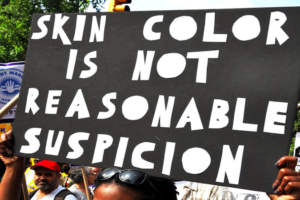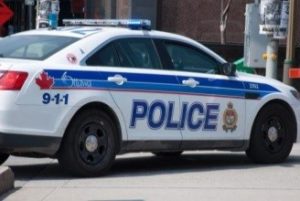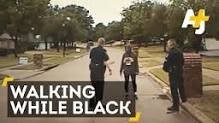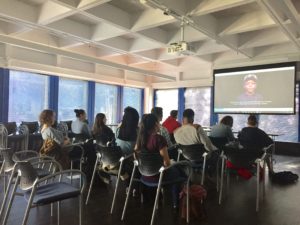By Rolf H. François
The following is pursuant to our meeting at BCRC on May 5th, 2016 regarding the Meeting of the Ad Hoc Community Meeting on Rights and Freedoms.
During our meeting, I suggested that we identify the reasons why the Commission des droits de la personne et des droits de la jeunesse failed to protect Black citizens of Quebec from discrimination. The fact that our struggles are misunderstood or ignored by the judicial system is because, in my humble opinion, the majority of the current judges in Quebec are unaware of our truths. As such, more diversity on the bench should be requested. It’s a shame that our first Black Attorney goes back to 1857, but we still have not had a Black Justice on the Supreme Court bench or on the Court of Appeals for this province. The Courts cannot understand what they do not know; therefore, diversity is part of the solution. Another solution is eliminating discretion. The Supreme Court of the United States, in 1964, stated that when there’s discretion there is no protection. This discretion could be eliminated by legislative action at the National Assembly.
The strategies that were suggested during our meeting, on May 5th, were the following (my suggestions are not absolute and were humbly and respectfully submitted. I do not expect everyone to agree with them):
SUGGESTED STRATEGIES
- Social Media:
Social media should be greatly utilized because it allows us to reach an incredible amount of individuals across the world. When speaking of social media, we mean Facebook, Twitter, Instagram, Tumblr, blogs, etc. For example, in 2013, when the owner of the Buonanotte Restaurant, on St. Laurent Boulevard, was required by the Office quebecois de la langue francaise (OQLF) to change all the menus at his restaurant, because of the fact that the words “pasta”, “antipasti” and “calamari” were not in French, he went public to generate a public outcry. This sad part of our history is commonly called Pastagate. With the exception of the said three words the rest of the menu could be read in French. We can imagine the cost of changing the menus for these three words. Pastagate received international attention in the media, which publicly embarrassed the Provincial Government. Quebec does not want to attract this kind of negative public attention because of the fact that American companies are principal investors in the province. The entire incident was initially fueled by a group called putbacktheflag, which shared the story over 20,000 links on its Facebook and Twitter pages within the first day of the initial story breaking.
- Meet with Prime Minister Trudeau and Premier Couillard:
If we agree with the premise that the source of the systemic failure of the Quebec Human Rights Commission, to defend the rights and freedom of Black Quebecers against racism and discrimination, lies partly in the lack of diversity on the judicial bench, then meeting with Prime Minister Trudeau and the Premier Couillard should seriously be contemplated. Indeed, according to section 96 of the Constitution Act of 1867, the Governor General shall appoint the Justices of the Superior, District, and County Courts in each Province, except those of the Courts of Probate in Nova Scotia and New Brunswick. As we already know, the Governor General makes these appointments after receiving the Prime Minister’s advice.
The justice system of Quebec is currently comprised of only three Black Justices, Justice Daniel Dortelus, Justice Magalie Lewis and Justice Guylene Beauge. Justice Beauge is the first and only judge sitting on a Superior bench of the province. The chances of the people of our community appearing before these three judges are close to none. After a few years of patience, Justice Juanita Westmoreland-Traore introduced, in Quebec law, the concept of racial profiling, which had already been introduced in Ontario years before. If not for our first Black Justice in Quebec, racial profiling would never have been part of Quebec law. This is so because she understands our truth. Indeed, just like women rights in Canada evolved with the assistance of women Justices, we cannot expect our rights and freedoms to be protected and evolve with people other than ourselves on the judicial bench. Premier Couillard advises the Lieutenant-Governor regarding Provincial nominations in the judicial system. Consequently, we would have to meet with the current Prime Minister and Premier to ensure that our people are represented on this Province’s justice system to guarantee multiculturalism and diversity. Diversity will guarantee that our rights and freedom are properly protected.
- Speak with our people in the United States of America:
We should inform our people in the United States as much as we can (via emails, newspapers, social media, etc.) regarding what we are currently experiencing and what our history in Quebec is. I wish to repeat that the Provincial Government does not want to attract this kind of negative public attention because of the fact that American companies are principal investors in this province. Our people in the USA will be sensitive to our experience, and might even help or participate in our struggle once they are made aware of it. The boycott of Quebec’s product of industries could very well be from the United States.
- Use newspapers/television such as the Gazette, CTV, the Toronto Star, etc.:
We should secure contacts within great mediums, such as the Gazette, CTV, CBC, CJAD, and others, to ensure that our messages are effectively communicated and reach the entire population. For example, Quebec’s French mediums, such as TVA or Journal de Montreal, publish every event that concerns and affects the French language. They effectively make sure that the message passes across the province. Respectfully submitted, papers, such as the Community Contact, are just that… papers for the community; this means it stays within the community. However, greater mediums will provide us with a greater power, due to the fact that our message will reach a greater audience. We should also make sure that the contacts at these mediums make sure to place our concerns as a priority, so that our messages are published in the first pages of the said newspapers, or in the first minutes of the news broadcasting.
- Keep a steady pressure:
The pressure on the Prime Minister and the Premier should be constant and steady once our demands are communicated to them, so that they commit themselves. A commitment from the head of government, positive or negative, will form part of our message to be published by the mediums mentioned at point # 4. If the commitment is negative, the population is entitled to know, and the Prime Minister or the Premier should face our discontent. We only get a commitment from them by applying a steady and constant pressure. For example, the UNIA has requested that the City of Montreal honors Mr. Marcus Garvey with a boulevard. Had the UNIA not applied a constant and steady pressure, the said file would’ve been forgotten, and the Borough Mayor, Copeman, would not have made a commitment that the UNIA finds absolutely inadequate. The steady pressure is to ensure that we get a positive or negative answer from the authorities.
- Vote and clearly express our demands:
When unsatisfied with a particular policy or response from the proper authorities, one must clearly and openly display their dissatisfaction. We are currently dissatisfied with the ways that we are being treated, but individuals outside our community are unaware. For example, racial profiling is a huge problem in our community, but the authorities are unresponsive because the problem does not affect them directly. When a situation affects the French language, the French people raise their concern immediately: it is raised in the media immediately, the situation is addressed immediately by the authorities, and, if the problem persists, the authorities will face judgment when election comes (e.g. Premier Jean Charest lost his election when the population disagreed with his new policy of raising university tuitions – the students were very vocal when they decided to start a student strike). Racial profiling affects us, and we should clearly, and openly, display our discontent in the media/social media, request corrective measures from the proper authorities (federally and provincially), and, if we are still ignored then, we shall mobilize our community before, and during, election time to make sure that the candidate who supports our demands for change is elected. We need to come out and demand change.
- Unity:
The need to have all Black Associations unite is extremely important. Indeed, when a particular association raises a problematic that affects and concerns our community, the said problem concerns us all without exception. Thus, we should all make a common front every time one of us (i.e. Black association) steps forward in the media/newspaper/radio to demand justice. When we will communicate to the Prime Minister and Premier, we shall all sign the letter that will be sent to them. The need for unity does not mean that we should necessarily form one association by joining all the current Black associations. Every association has its own specificity and uniqueness that it adds to our struggle in this province. For example, if CRARR makes an official statement on CTV after filing a motion in Court to bring down racial profiling, BCRC, UNIA, La ligue des noirs, etc. should all join CRARR to demonstrate our unity and will to fight against racial profiling. This requires that the said associations effectively communicate between themselves. The common front demonstrates our seriousness. Together we are stronger! Further, the concept of unity must also apply to the population itself. We should find a solution to unite us all. Language as a barrier should not exist, and we should find ways to conquer those said barriers. In other words, the Haitians on the east end of the Island should be aware that we are defending and protecting their rights as well. Unfortunately, a huge part of them are not aware of the existence of some Black associations. We are not here solely for the English speaking Blacks… Our goal is to protect our people regardless of their origins, and this protection should extend to other races as well.
- Speak out, not only for our community, but for injustice:
Dr. Martin Luther King Jr. once said, “Injustice anywhere is a threat for justice everywhere”. We should not only speak out when injustice affects our community. We must demonstrate that we are not only fighting for our people, but for anyone who is a victim of injustice. For example, when a particular injustice affects Quebec’s Jewish citizens, Muslim citizens, Aboriginal citizens, etc. the Black associations should all add their voices to the fight. We should never let the B’Nai Brith fight alone for instance. We should stand by their sides because injustice affects us all, and we should strongly demonstrate our solidarity. For when injustice affects our community, the ones we stood by will stand by us when we are afflicted. If someone is not convinced, and believes that we should only fight for our own issues, let’s not forget that amongst the Jewish people we will find many of our own people. Our people can also be found among Muslims and First Nation Members as well. In my humble opinion, when we fight against injustice there should be no specificity. If we let one injustice pass, another will surely, and eventually, come for us. We are all united against injustice. The prominent Protestant pastor, Mr. Martin Niemoller (1892-1984), once wrote a poem that clearly expresses my opinion: “First They Came for The Socialists…” –
First they came for the Socialists, and I did not speak out –
Because I was not a Socialist.
Then they came for the Trade Unionists, and I did not speak out –
Because I was not a Trade Unionist.
Then they came for the Jews, and I did not speak out –
Because I was not a Jew.
Then they came for me – and there was no none left to speak for me.
It is not right that the citizens of Quebec continuously pay (by paying taxes) to protect the French people’s rights, which they think is absolutely normal, but our monies are not properly used to protect our rights. Finally, just like at my point #7, we are stronger together than we are apart!
- Be visible so that our community knows where to find us:
Our community is blessed with many associations that were created to defend and protect our people’s rights. Unfortunately, some of our people are unaware of the existence and uniqueness of some of these associations. Consequently, I humbly and respectfully suggest that we should advertise and make the said associations more visible. I, for instance, know the purpose of CRARR, and, when a young Black man came to me regarding being the victim of racial profiling, I immediately provided him with Mr. Niemi’s contact information. He did not know that CRARR existed. Unlike the associations in the United States, we are not sufficiently visible. I suggest that we use social media/media/newspapers/community newspapers to advertise every association, and that we advertise often, so that our people know who we are and where to find us.
- We shall always speak for ourselves and we will not allow others to speak for us:
This last point is very important and speaks for itself. One of the problems that we constantly encounter is the fact that other people state what should apply for us, or what is acceptable or not. For example, Quebec’s definition of racism is one that is not acceptable in the United States. This is so because Quebec’s definition is very basic and does not cover the subtlety of today’s racism. We know what racism is and we should inform and educate other people about it. As another example, the UNIA has requested that the City of Montreal names a boulevard in honor of Mr. Marcus Garvey. The response of the Toponymy Commission was that Mr. Garvey was too controversial, as he was incarcerated for fraud and he entered into an agreement with some segregationist to deport African-Americans back to Africa. Before reaching such decision, the Commission was made aware of Mr. Garvey’s achievements and that he was honored around the world. Despite the information provided, the Commission rendered a negative decision. Mayor Copeman then stated that we should find a more suitable candidate. The UNIA immediately responded that we had submitted a suitable candidate, and that it was not for other people to tell us who was suitable or not amongst our own people. We don’t want other people to speak for us. We shall always speak for ourselves. If need be, we might consult amongst ourselves, unite, and then come out strong.
For Full Version of Semaji December 2016 Click Here











